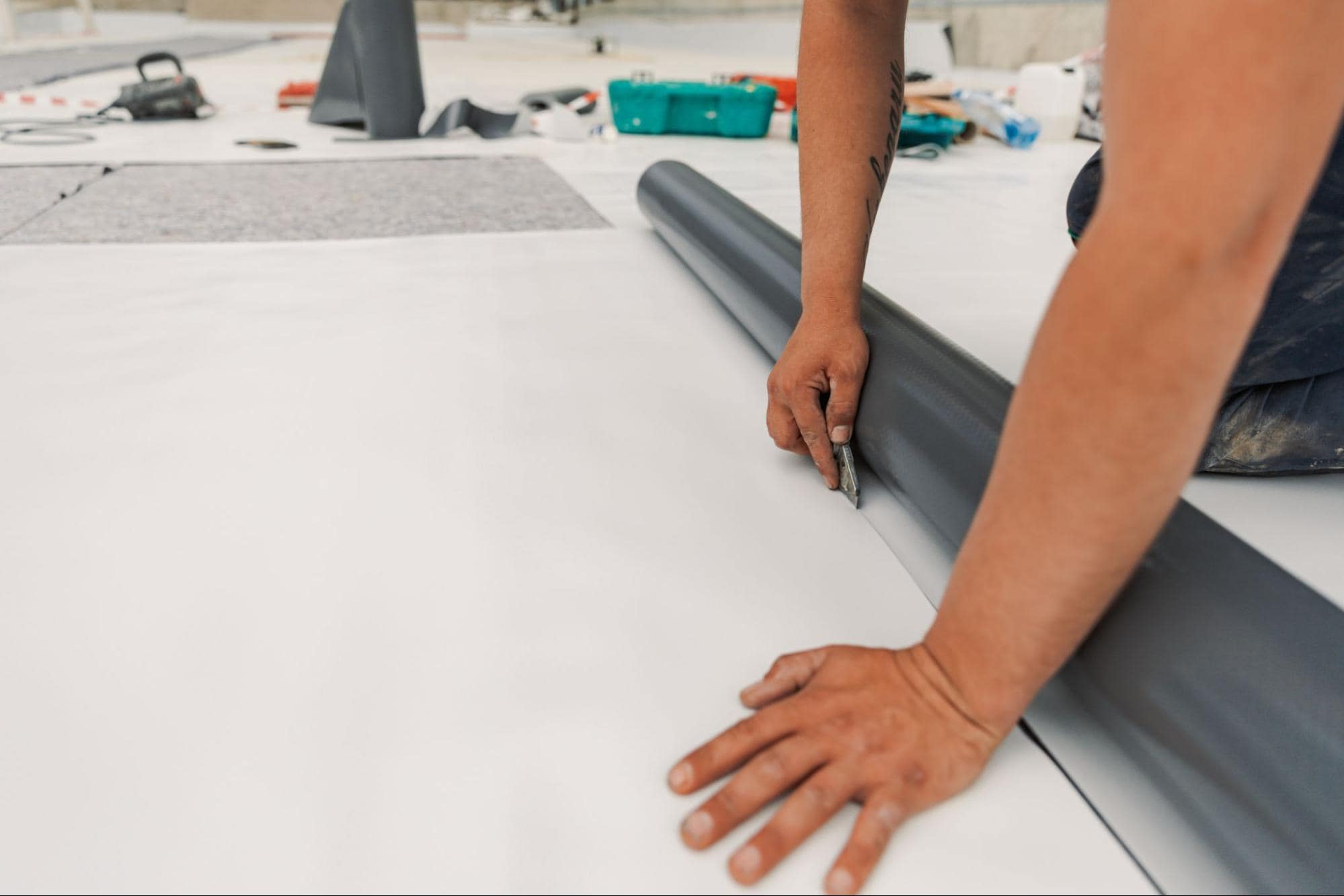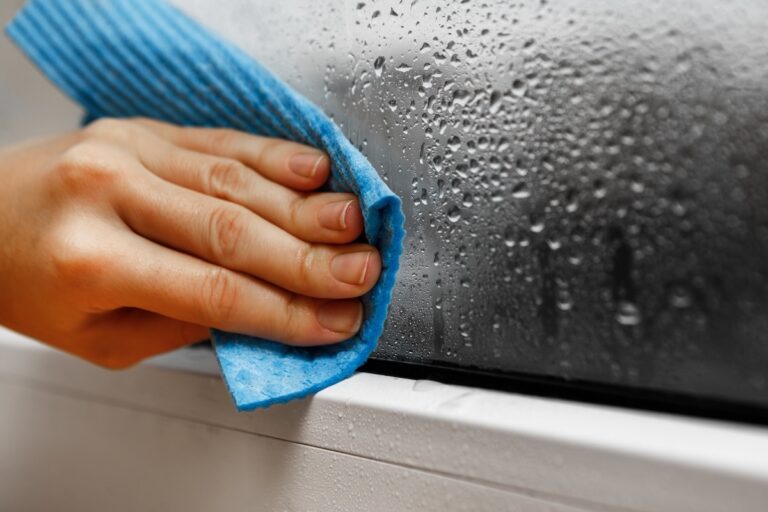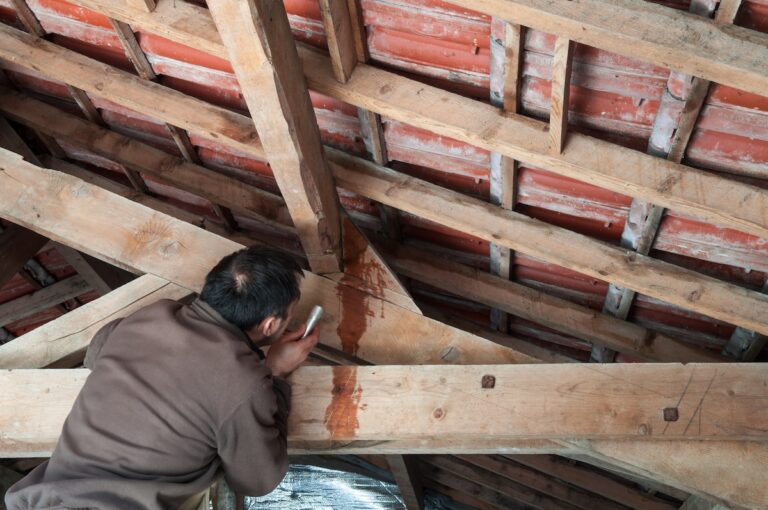In the realm of commercial roofing, Ethylene Propylene Diene Monomer (EPDM) and Thermoplastic Polyolefin (TPO) are two widely used materials known for their durability and versatility. But in a battle between TPO vs. EPDM who comes out triumphant?
This guide aims to provide a thorough examination of both EPDM and TPO roofing systems, detailing:
- Their composition
- Benefits
- Drawbacks
- Cost considerations
- Longevity
- Energy efficiency
- Selection criteria
- The importance of hiring a qualified roofing contractor
Understanding EPDM Roofing
EPDM, or Ethylene Propylene Diene Monomer, is a synthetic rubber roofing membrane prized for its resilience and weather resistance. EPDM roofs are typically installed in large, seamless sheets, offering superior protection against water intrusion and elemental exposure.
Understanding TPO Roofing
TPO, or Thermoplastic Polyolefin, is a single-ply roofing membrane composed of a blend of rubber and thermoplastic materials. TPO roofing systems are renowned for their energy efficiency, ease of installation, and resistance to UV radiation.
Like EPDM, TPO roofs are often installed in large sheets to minimize seams and potential leak points.
Pros and Cons of EPDM Roofing

EPDM is a reliable roofing material but that doesn’t mean it’s without it’s drawbacks. Here are some of the factors to keep in mind:
👍 Pros:
- Exceptional Durability: EPDM roofing exhibits remarkable durability, capable of withstanding harsh weather conditions and extreme temperatures.
- Flexibility: Its rubber composition provides EPDM with excellent flexibility, allowing it to adapt to building movements without compromising integrity.
- Cost-Effectiveness: EPDM roofing is a cost-effective option compared to many other roofing materials, making it an attractive choice for budget-conscious property owners.
- Ease of Repair: Minor damages to EPDM roofs can often be repaired quickly and affordably, extending the roof’s lifespan and reducing maintenance costs.
- Longevity: With proper maintenance, EPDM roofs can last up to 30 years or more, providing excellent long-term value for property owners.
👎 Cons:
- Vulnerability to Punctures: While durable, EPDM roofing may be susceptible to punctures from sharp objects or falling debris, potentially compromising its integrity.
- Limited Color Options: EPDM roofing typically comes in black, limiting design choices for property owners seeking aesthetic variety.
- Heat Sensitivity: EPDM may experience degradation in high-temperature environments, affecting its longevity and performance.
- Professional Installation Required: Proper installation of EPDM roofing requires expertise to ensure proper adhesion and sealing of seams, necessitating professional contractors.
Pros and Cons of TPO Roofing

Like EPDM, TPO roofs come with their fair share of pros and cons. Here are just a few:
👍 Pros:
- Energy Efficiency: TPO roofing reflects sunlight, reducing heat absorption and cooling costs during warm weather, contributing to energy savings and environmental sustainability.
- Easy Installation: TPO roofing is lightweight and can be installed quickly, minimizing labor costs and disruption to building occupants.
- Chemical Resistance: TPO membranes are resistant to chemical exposure, making them suitable for industrial environments where chemical spills may occur.
- Versatile Color Options: Unlike EPDM, TPO roofing is available in a variety of colors, offering greater design flexibility for property owners.
- Recyclability: TPO roofing can be recycled at the end of its lifespan, reducing environmental impact and promoting sustainability.
👎 Cons:
- Potential for Shrinkage: TPO roofing membranes may shrink over time, leading to seam separation and water infiltration if not properly installed or maintained.
- Susceptibility to Tears: TPO roofing may be more prone to tearing during installation or due to mechanical damage, necessitating careful handling and maintenance.
- UV Degradation: Prolonged exposure to sunlight may cause some degradation of TPO roofing materials over time, impacting performance and longevity.
- Uncertain Longevity: While TPO roofing has been in use for several decades, its long-term durability compared to EPDM is still being evaluated.
Cost Considerations
EPDM roofing typically costs between $4 to $8 per square foot installed, making it a cost-effective option for commercial properties. TPO roofing tends to be slightly more expensive, ranging from $5 to $10 per square foot installed. However, prices may vary based on factors such as roof size, location, and contractor rates.
Longevity and Durability
Both EPDM and TPO roofing systems offer impressive longevity when properly maintained. EPDM roofs can last up to 30 years or more, while TPO roofs have a similar lifespan, though exact durability may vary depending on environmental factors and maintenance practices.
In terms of durability, EPDM excels in puncture resistance, while TPO is prized for its UV resistance and energy-saving properties.
Energy Efficiency Comparison
TPO roofing holds an advantage in energy efficiency due to its reflective properties, reducing heat absorption and cooling costs during warm weather. EPDM roofing, while not inherently reflective, can contribute to energy savings through proper insulation and ventilation practices.
The choice between EPDM and TPO roofing may depend on climate considerations and energy efficiency goals.
Choosing the Right Roofing Material For You
When selecting between EPDM and TPO roofing, consider factors such as climate, budget, building design, and environmental impact. EPDM may be preferred for its durability and cost-effectiveness in cooler climates, while TPO is suitable for warmer regions due to its energy-saving properties.
Additionally, prioritize hiring a reputable commercial roofing contractor with experience in installing your chosen roofing material to ensure proper installation and warranty coverage.
What to Look for in a Commercial Roofing Contractor
When hiring a commercial roofing contractor for EPDM or TPO installation, consider factors such as:
- Experience
- Certifications
- References
- Warranty coverage
- Communication
Choose a contractor with a proven track record of successful installations and a commitment to quality workmanship. Clear communication and transparency throughout the roofing project are essential for a successful outcome.
Choose an Experienced Roofing Contractor
EPDM and TPO roofing systems offer distinct advantages and considerations for commercial property owners. While EPDM excels in durability and cost-effectiveness, TPO stands out for its energy efficiency and color options.
If you’re trying to choose between TPO and EPDM roofing systems, your best bet is to consult with a professional in the roofing industry, to learn from their experience. Contact Johnson Restoration for reliable guidance that puts your roofing needs first!






